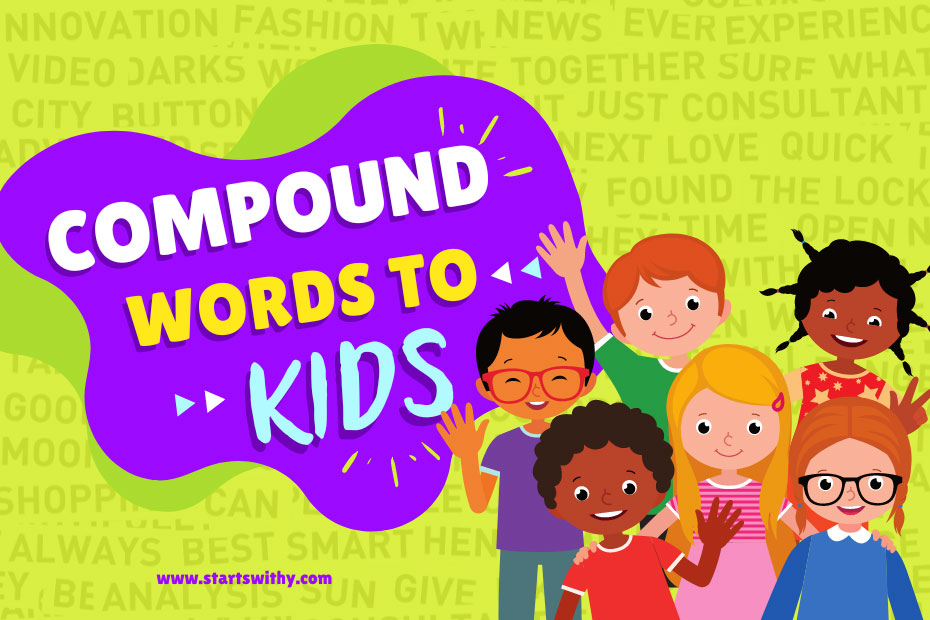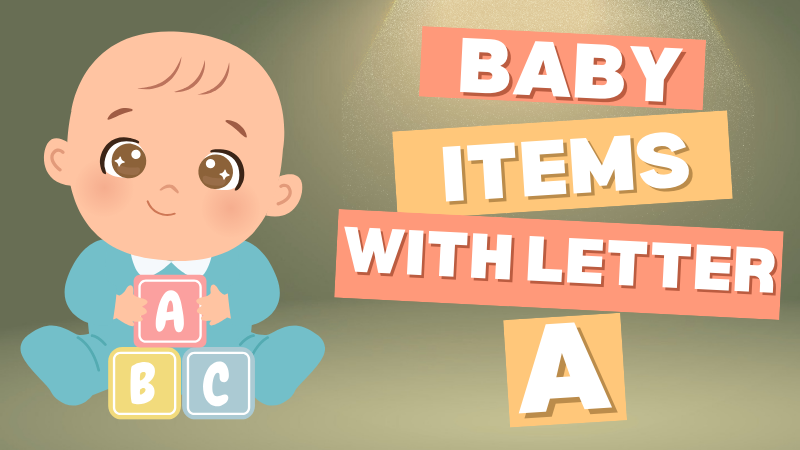Hey there! Are you ready to dive into the wonderful world of compound words? Well, you’re in the right place! In this article, I’ll be sharing some exciting compound words that are perfect for kids.
Compound words are formed by combining two or more words to create a brand new word with a whole new meaning. They are like word puzzles that make language learning fun and engaging for young minds.
What are Compound Words?
Compound words are a fascinating aspect of the English language that can make learning vocabulary more enjoyable for kids. These words are formed by combining two or more separate words to create a new word with a different meaning. It’s like putting together puzzle pieces to form a whole new picture!
The beauty of compound words lies in their ability to convey a complex idea or concept in a single word. By combining words, we can express ourselves more efficiently and effectively. For example, the compound word “birthday” combines the words “birth” and “day” to represent the day of someone’s birth. Similarly, the word “rainbow” combines “rain” and “bow” to describe the beautiful arc of colors that appears after rainfall.
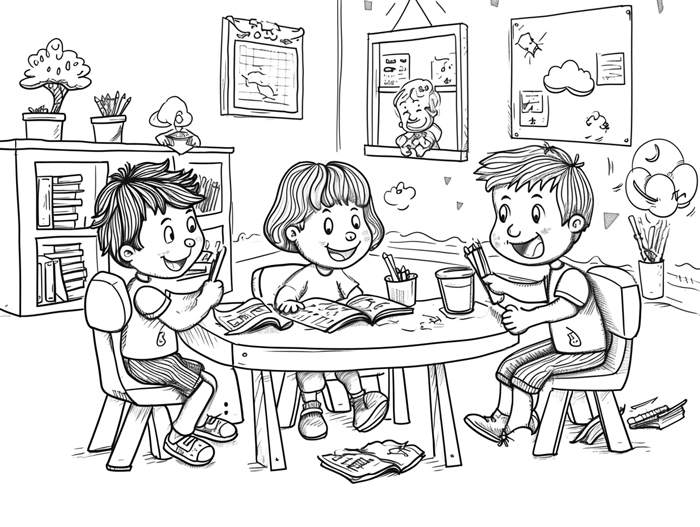
Compound words can be made up of two nouns, such as “football” or “classroom,” where two separate objects or concepts are combined. They can also be formed by combining an adjective and a noun, like “sunflower” or “lighthouse,” where the adjective provides additional meaning or description to the noun.
I find compound words to be particularly useful in enhancing a child’s vocabulary and language skills. By understanding the individual words that make up a compound word, children are able to grasp the meanings of new words more easily. It also helps them see connections between different ideas and expand their knowledge of the world around them.
Benefits of Learning Compound Words For Kids
Compound words play a significant role in enhancing children’s vocabulary and language skills. As children learn and understand compound words, they gain several important benefits, which help them in various aspects of their language development. Here are some key advantages of learning compound words for kids:
Vocabulary Expansion
Learning compound words helps children expand their vocabulary by introducing them to a wide range of new words. Each compound word is made up of two or more individual words, which children can easily recognize and understand. By breaking down these words into their components, children not only learn the meaning of the compound word itself but also gain a deeper understanding of the individual words that make it up. This process allows children to grasp the meanings of new words more easily and rapidly expand their vocabulary.
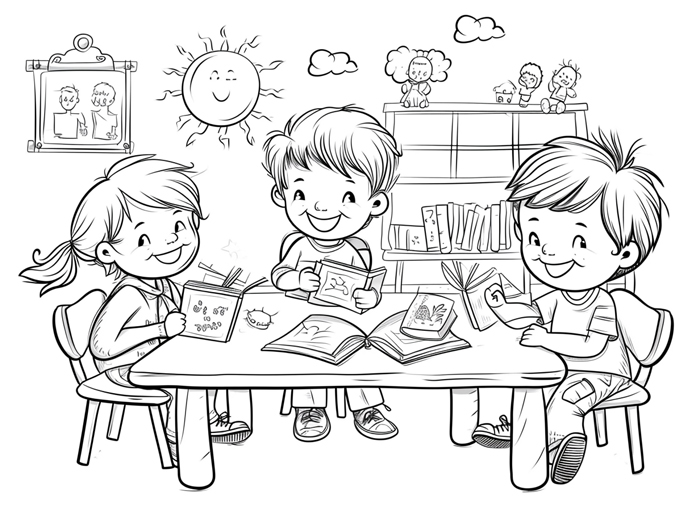
Reading and Comprehension Skills
Understanding compound words enhances children’s reading and comprehension skills. Compound words often convey complex ideas or concepts in a single word. When children learn and recognize compound words, they can more accurately interpret and understand the meaning of sentences and texts. Additionally, recognizing compound words enables children to read more fluently since they can quickly identify the individual words within the compound and comprehend their combined meaning. This fluency improves their reading comprehension and overall reading skills.
Writing Skills
Learning compound words also enhances children’s writing skills. When children are familiar with compound words, they can use them effectively in their writing to convey ideas more concisely. Compound words allow children to express complex thoughts with fewer words, making their writing more concise and efficient. Moreover, understanding compound words helps children understand word formation and structure, which allows them to create new words and expand their vocabulary even further. This skill in word formation enhances children’s overall writing proficiency and creativity.
Critical Thinking Skills
Learning compound words promotes the development of critical thinking skills in children. When children encounter unfamiliar compound words, they need to break them down into their component parts to understand their meaning. This process requires them to analyze and think critically about the individual words and their relationship within the compound word. By engaging in this cognitive process, children develop their analytical and problem-solving skills, as well as their ability to make connections between different words and concepts. These critical thinking skills have a significant impact on children’s overall cognitive development.
Overall, the benefits of learning compound words for kids are plentiful. By expanding their vocabulary, improving their reading and comprehension skills, enhancing their writing skills, and promoting critical thinking, compound words provide children with the necessary foundation for strong language development. As children continue to learn and use compound words, their language skills will flourish, and their ability to communicate effectively will grow exponentially.
Types of Compound Words
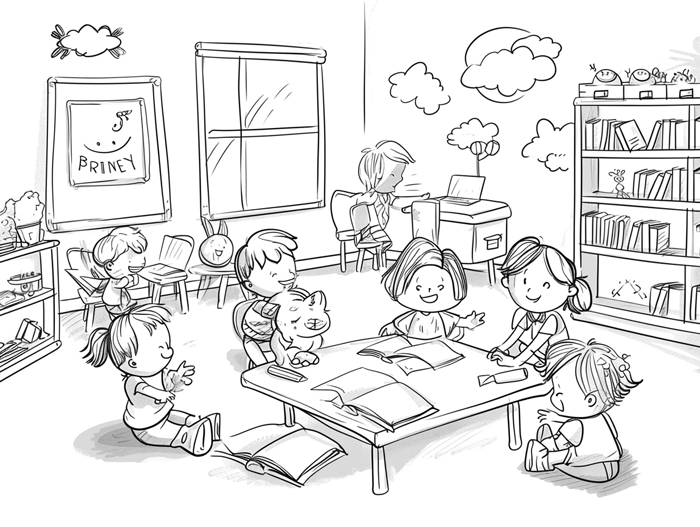
Closed Compound Words
Closed compound words, also known as solid compound words, are formed by combining two or more separate words without any spaces or hyphens. These words appear as a single unit and are written together as one word. Examples of closed compound words include:
- Basketball: A sport played with a ball and two baskets.
- Butterfly: An insect with colorful wings.
- Lifeguard: A person who ensures the safety of swimmers at a beach or pool.
Closed compound words are particularly interesting because the meaning of the compound word is often different from the individual words that make it up. Learning and recognizing closed compound words helps children understand the connection between words and expand their vocabulary.
Hyphenated Compound Words
Hyphenated compound words, as the name suggests, are formed by combining two or more words with a hyphen (-) between them. These words retain their separate identities but are connected to convey a specific meaning. Examples of hyphenated compound words include:
- Well-known: Familiar to many people.
- High-tech: Using advanced technology.
- Big-hearted: Showing kindness and generosity.
Hyphenated compound words are useful in describing complex ideas or qualities concisely. By understanding and using hyphenated compound words, children can add precision and nuance to their language.
Open Compound Words
Open compound words, also called spaced compound words, are formed by combining two or more words without any spaces or hyphens, but are written separately. These words are not connected and are considered distinct words. Examples of open compound words include:
- Ice cream: A frozen dessert made from milk or cream.
- School bus: A vehicle that transports students to and from school.
- Air travel: The act of journeying through the air on an aircraft.
Open compound words allow children to recognize and understand the individual meanings of each word, as opposed to closed or hyphenated compound words where the whole word has a different meaning. By familiarizing themselves with open compound words, children can more effectively communicate and express their thoughts.
Understanding the different types of compound words helps children develop their vocabulary skills and enhances their ability to comprehend and use complex language. Next, we will explore how compound words can benefit children in various aspects of their language development.
20 Common Compound Words for Kids
| Compound Word | Made From | Definition | Example Sentence |
|---|---|---|---|
| Toothpaste | Tooth + Paste | A substance used to clean teeth | Brush your teeth with toothpaste twice a day. |
| Butterfly | Butter + Fly | A beautiful insect with wings that look like butter | The butterfly fluttered from flower to flower. |
| Sunflower | Sun + Flower | A tall flower with a face resembling the sun | Bees buzzed around the bright yellow sunflower. |
| Firefly | Fire + Fly | A small insect that lights up at night | Fireflies sparkled like tiny stars in the darkness. |
| Raincoat | Rain + Coat | A coat that keeps you dry in the rain | Don’t forget your raincoat if it’s going to rain today. |
| Bedroom | Room + Bed | A room where you sleep | I read a book before bed in my cozy bedroom. |
| Schoolhouse | School + House | A building where children learn | The schoolhouse had a playground and a library. |
| Mailbox | Mail + Box | A box where mail is delivered | Check the mailbox to see if you got any letters. |
| Doorknob | Door + Knob | The handle you turn to open a door | The doorknob felt cold in my hand. |
| Snowflake | Snow + Flake | A small piece of ice that falls from the sky | Each snowflake has a unique shape. |
| Toothbrush | Tooth + Brush | A tool used to clean your teeth | Brush your teeth for two minutes after meals. |
| Playground | Play + Ground | A place where children play outside | The children squealed with joy on the playground. |
| Birthday | Birth + Day | The day you were born | My birthday is next month, and I’m having a party! |
| Storybook | Story + Book | A book with stories in it | I love to curl up with a good storybook at bedtime. |
| Rainbow | Rain + Bow | A colorful arc of light in the sky after rain | The children chased the rainbow across the field. |
| Seashell | Sea + Shell | The outer covering of a sea creature | I collected seashells on the beach. |
| Backpack | Back + Pack | A bag worn on your back to carry things | I put my books and lunch in my backpack before school. |
| Strawberry | Straw + Berry | A red fruit with tiny seeds on the outside | Pick some ripe strawberries from the garden. |
| Firetruck | Fire + Truck | A vehicle used to fight fires | The firetruck roared down the street with sirens blaring. |
Compound Words List A to Z
Compound words are formed when two or more words are combined to create a new word with a different meaning. These words are an essential part of building vocabulary and language skills for kids. Here is a comprehensive list of compound words from A to Z:
- A: airport, afternoon, already, anywhere
- B: backpack, basketball, birthday, breakfast
- C: classmate, cowboy, cupcake, crosswalk
- D: daylight, dishwasher, downtown, dragonfly
- E: earthquake, earring, everywhere, eyebrow
- F: firefighter, football, forehead, friendship
- G: goldfish, grandmother, greenhouse, guitar
- H: homework, horsepower, hometown, hummingbird
- I: ice cream, inside, into, inventor
- J: jellyfish, jump rope, jungle, just
- K: keyboard, king-size, kite, kitchen
- L: lunchbox, lighthouse, loudspeaker, lovebird
- M: moonlight, mousepad, motorcycle, movie
- N: notebook, newspaper, nighttime, nothing
- O: outside, outgrown, overhead, outlook
- P: playground, pancake, passport, popcorn
- Q: quarterback, quicksand, quarter, queen-size
- R: rainbow, railroad, raincoat, roommate
- S: snowball, sunshine, skateboard, swimmer
- T: toothbrush, toolbox, teammate, teapot
- U: underwater, umbrella, uphill, uniform
- V: vacation, video game, volleyball, volcano
- W: waterfall, website, wheelchair, wink
- X: x-ray, xylophone
- Y: yellow, yesterday, yearbook, yourself
- Z: zookeeper, zero, zigzag, zoom
Learning these compound words not only expands a child’s vocabulary but also helps them understand how words can be combined to convey different concepts. Encourage your child to use these words in everyday conversations to further enhance their language skills.
Compound words for first graders with example sentences – Table
| Compound Word | Made From | Definition | Example Sentence |
|---|---|---|---|
| Sunshine | Sun + Shine | Bright sunlight | The warm sunshine tickled my nose. |
| Airplane | Air + Plane | A vehicle that flies in the air | I waved goodbye as the airplane soared into the clouds. |
| Raincoat | Rain + Coat | A coat that keeps you dry | Put on your raincoat, the puddles are deep! |
| Mailbox | Mail + Box | A box where mail is delivered | Let’s check the mailbox for letters from grandma. |
| Bedroom | Room + Bed | A room where you sleep | Time to snuggle up in my cozy bedroom. |
| Toothbrush | Tooth + Brush | A tool used to clean your teeth | Brush your teeth after every meal to keep them healthy. |
| Seashell | Sea + Shell | The outer covering of a sea creature | I found a beautiful seashell with pearly swirls. |
| Birthday | Birth + Day | The day you were born | Happy birthday to my best friend! |
| Playground | Play + Ground | A place where children play outside | Let’s climb the slide and swing on the swings! |
| Butterfly | Butter + Fly | A beautiful insect with colorful wings | The butterfly danced from flower to flower. |
| Sunflower | Sun + Flower | A tall flower with a face like the sun | The sunflowers towered over me in the field. |
| Snowflake | Snow + Flake | A tiny crystal of ice that falls from the sky | Each snowflake sparkles like a tiny diamond. |
| Firefly | Fire + Fly | A small insect that lights up at night | Fireflies winked like fairy lights in the garden. |
| Ladybug | Lady + Bug | A lucky red beetle with black spots | Look! A ladybug landed on my finger. |
| Teddy bear | Teddy + Bear | A cuddly toy bear | I hug my teddy bear when I need comfort. |
| Storybook | Story + Book | A book with exciting stories | Let’s read a bedtime story from my favorite storybook. |
| Playground | Play + Ground | A place where children play outside | Let’s climb the slide and swing on the swings! |
| Rainbow | Rain + Bow | A colorful arc of light in the sky after rain | The rainbow painted the sky with bright colors. |
| Watermelon | Water + Melon | A large, refreshing fruit | Mmm, this watermelon slice is juicy and sweet! |
Examples of Compound Words List
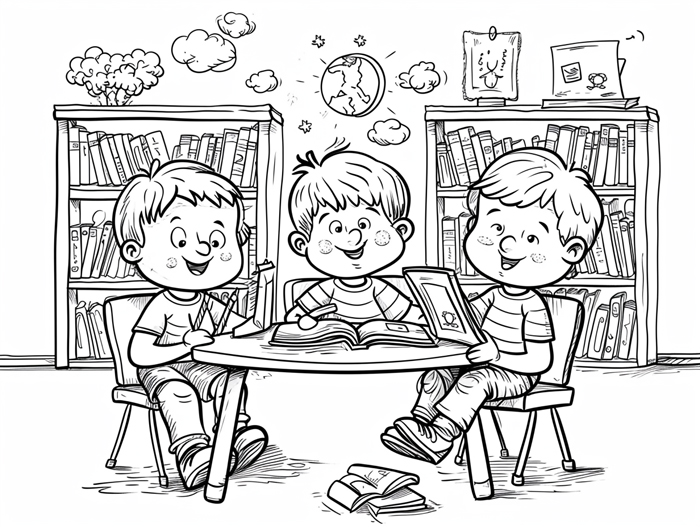
Noun-Noun Compound Words
Noun-noun compound words are formed by combining two nouns together to create a new word that represents a specific concept or object. Here are a few examples:
- Rainbow: a combination of “rain” and “bow” to describe the colorful arc that appears in the sky after rainfall.
- Basketball: a sport played with a ball and a basket.
- Firefly: a type of insect that produces light.
- Doghouse: a small outdoor shelter for dogs.
Adjective-Noun Compound Words
Adjective-noun compound words are created by combining an adjective with a noun to describe or identify a specific person, place, or thing. Here are some examples:
- Greenhouse: a structure used to grow plants in a controlled environment.
- Snowman: a figure made of snow, shaped like a person.
- Wildfire: a large and uncontrolled fire that spreads quickly in a natural area.
- Highway: a major road for public use, usually connecting cities or towns.
Adverb-Adjective Compound Words
Adverb-adjective compound words are formed by combining an adverb and an adjective to describe the manner or degree of something. Here are a few examples:
- Well-known: widely recognized or familiar to many people.
- Slowly: at a slow speed or in a slow manner.
- Hardworking: diligent and industrious in one’s work or efforts.
- Softspoken: speaking in a gentle and calm manner.
Verb-Noun Compound Words
Verb-noun compound words are created by combining a verb and a noun to describe an action or process. Here are a few examples:
- Swimming pool: a place for swimming or recreational water activities.
- Baking soda: a type of powder used in baking as a leavening agent.
- Skateboard: a small board with four wheels used for skating.
- Driving school: an educational institution where people learn how to drive.
Preposition-Noun Compound Words
Preposition-noun compound words are formed by combining a preposition and a noun to indicate a relationship or position. Here are a few examples:
- Underground: beneath the surface of the ground.
- Overcoat: a heavy coat worn over other clothing.
- Offspring: the child or children of a person or animal.
- Outfield: the part of a baseball field beyond the diamond or infield.
- Upstairs: on or to a higher level of a building.
Compound words are a great way to expand a child’s vocabulary and understanding of language. Encouraging them to use these words in their everyday conversations can further enhance their language skills.
How to Teach Compound Words to Kids
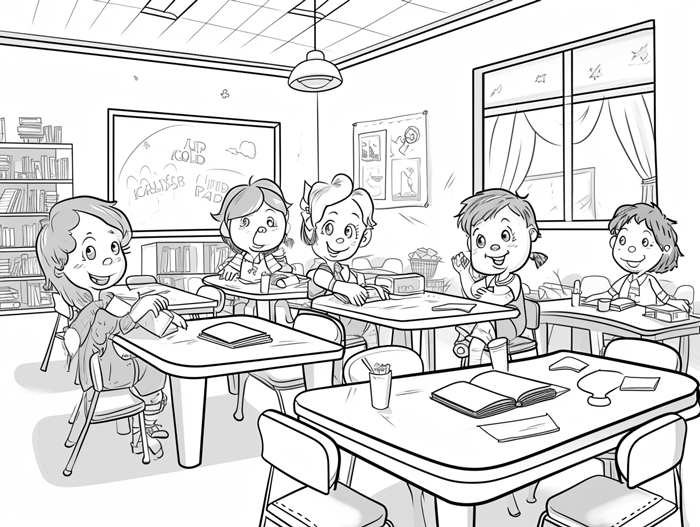
Word Identification
When teaching compound words to kids, the first step is to help them identify these special words. Here’s how you can do it:
- Break it down: Explain to kids that compound words are made up of two smaller words that come together to form a new word. For example, the word “sunflower” is made up of the words “sun” and “flower.”
- Visual aids: Use visual aids such as flashcards or pictures to illustrate compound words. Show them pictures of objects and ask them to identify the two words that make up the compound word.
- Fun games: Engage kids in interactive games that involve identifying compound words. Play “I Spy” or create a scavenger hunt where they have to find objects that represent compound words.
Understanding Meaning
Once kids can identify compound words, the next step is to help them understand the meaning behind these words. Here’s what you can do:
- Discussion: Engage kids in conversations about the meaning of compound words. Ask questions like “What do you think the word ‘butterfly’ means?” or “Why do you think we call it a ‘firefighter’?”
- Context clues: Use context clues to help kids understand the meaning of compound words. For example, if they encounter the word “bookshelf” in a sentence, ask them to think about what a bookshelf might be used for.
- Illustrations: Create visual representations or drawings to illustrate the meaning of compound words. This can help kids associate the words with their corresponding objects or concepts.
Creating Compound Words
After kids have grasped the concept and meaning of compound words, it’s time to let them create their own. Here’s how:
- Word combining: Provide kids with a list of words and ask them to combine two words to create a compound word. For example, give them the words “rain” and “bow” and have them create the compound word “rainbow.”
- Word building: Give kids a word and ask them to add a prefix or a suffix to create a compound word. For instance, if the word is “play,” they can add the suffix “ground” to create the compound word “playground.”
- Group activities: Encourage kids to work together in groups to create compound words. This not only fosters collaboration but also allows them to learn from one another’s ideas.
Using Compound Words in Sentences
Once kids are comfortable creating compound words, it’s important to show them how these words are used in sentences. Here’s what you can do:
- Modeling: Start by modeling how to use compound words in sentences. Use simple, child-friendly sentences that incorporate compound words.
- Practice exercises: Provide kids with worksheets or exercises where they can practice using compound words in sentences. Allow them to get creative and come up with their own sentences using the words they have learned.
- Everyday conversations: Encourage kids to incorporate compound words into their everyday conversations. By using these words in context, they will strengthen their understanding and fluency.
Remember, teaching compound words to kids is an ongoing process. Keep reinforcing their knowledge and providing opportunities for practice to ensure their understanding and retention of these important vocabulary skills.
Fun Ways To Teach Simple Compound Words to Kids
Matching Games
One fun and interactive way to help children practice compound words is through matching games. These games not only provide an enjoyable experience but also reinforce the understanding of how words can be combined to create new meanings. Here’s how you can set up a matching game:
- Create word cards: Write down a variety of compound words on individual index cards. Make sure to include both familiar and unfamiliar words to challenge your child’s vocabulary.
- Divide the cards: Shuffle the word cards and divide them into two sets – one for the first part of the compound word and another for the second part.
- Match the cards: Lay out the first set of cards face-up on a table or the floor. Then, have your child find the corresponding second part of each word and place them together. Encourage them to read the complete compound word out loud as they make each match.
- Check and reinforce learning: Once all the cards are matched, review the compounds together to ensure accuracy. Repeat the process multiple times to reinforce the learning and improve retention.
Matching games not only engage children actively in learning but also help them recognize patterns and develop their critical thinking skills.
Sentence Formation
Sentence formation is another effective activity for practicing compound words. By using compound words in sentences, children can understand how they function in context. Here’s how you can engage your child in this activity:
- Create sentence prompts: Write down a list of sentence prompts that incorporate compound words. For example: “The sunflower is tall and __________” or “The firefighter uses a __________ hose.”
- Fill in the blanks: Have your child complete each sentence prompt using an appropriate compound word. Encourage them to think about the meaning of the compound word and its relevance to the sentence.
- Discuss the sentences: After completing the sentences, discuss with your child how the compound words enhance the meaning of the sentence. Ask them to explain their choices and encourage a discussion about alternative compound words that could have been used.
By using compound words in sentences, children can improve their comprehension and language skills while developing their creativity and imagination.
Building Stories
Building stories with compound words is an engaging way to reinforce their understanding and usage. Here’s how you can go about it:
- Choose a topic: Select a topic or theme for the story. It could be anything from animals to superheroes.
- Create a story structure: Help your child create a basic story structure with a beginning, middle, and end. Discuss the main characters, setting, and goals of the story.
- Incorporate compound words: Together, brainstorm and incorporate compound words into the story. Encourage your child to include compound words that add depth and meaning to the narrative.
- Tell and write the story: Once the story is crafted, have your child tell it orally first. Then, encourage them to write it down. This will strengthen their storytelling skills as well as their understanding and usage of compound words.
Building stories with compound words sparks creativity, improves narrative skills, and reinforces the concepts in a meaningful and engaging way.
Word Puzzles
Word puzzles are a fantastic way to challenge and entertain children while practicing compound words. Here are a few ideas for word puzzles you can try:
- Crossword puzzles: Create or find age-appropriate crossword puzzles that include compound words as clues. Encourage your child to solve the crossword by thinking critically and identifying the compound words.
- Word search: Make a word search puzzle with compound words hidden in a grid of letters. Challenge your child to find and circle each compound word within the grid.
- Anagrams: Mix up the letters of compound words and ask your child to rearrange them to form the correct word. This activity improves problem-solving skills and reinforces compound word recognition.
Word puzzles make learning compound words exciting and can be played individually or as a fun family activity.
Remember, it’s important to make the learning experience enjoyable and interactive. By incorporating these activities into your child’s routine, you can help them solidify their understanding of compound words while having fun along the way.
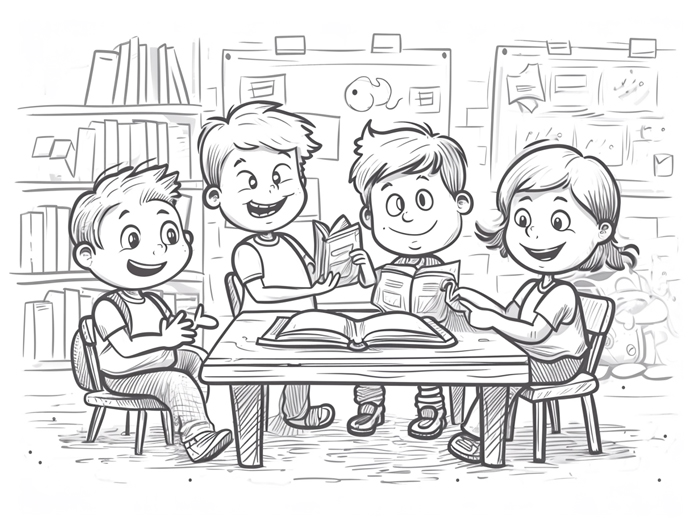
Flashcards
Flashcards are a great tool for helping kids learn and practice compound words. They provide a visual representation of the word combination and can be used for interactive learning activities. Flashcards can be created with simple words that can easily be combined to form compound words, such as “sun” and “flower” to make “sunflower.” By using flashcards, kids can actively engage with the words and reinforce their understanding of compound words.
Draw and guess
Draw Compound words are an important aspect of the English language that kids need to learn and understand. They are formed by combining two or more words to create a new word with a different meaning. Compound words can be found in all areas of vocabulary, from everyday objects to more complex concepts.
One example of a compound word is “draw.” When we break it down, we can see that it is formed by combining the word “draw” with the word “ing.” This creates the compound word “drawing.” Understanding this concept allows kids to expand their vocabulary and enhance their literacy skills.
Introducing compound words to kids can be done in a fun and interactive way. One popular method is to use visual aids like flashcards or illustrations to help children see the words visually. For the word “draw,” for instance, you can draw a picture of a child using a pencil or crayon on a piece of paper. This visual representation can help children grasp the concept of combining words to create new ones.
Furthermore, it is beneficial to provide children with plenty of opportunities to practice using compound words in context. Encouraging them to create sentences using compound words or playing word games that involve compound words can help reinforce their understanding and make learning more enjoyable. By incorporating compound words into their daily activities, kids can improve their vocabulary, reading comprehension, and overall language skills.
Guess the word
It is important for kids to learn compound words as they form a key part of English vocabulary. Compound words are created by combining two or more separate words to form a new word with a new meaning. For example, the word “sunflower” is a compound word made up of “sun” and “flower.” By understanding the concept of compound words, kids can improve their reading and writing skills.
One way to introduce compound words to kids is through visual aids and examples. Teachers and parents can use flashcards or make use of illustrations to show how separate words come together to form a compound word. By visually presenting the combination of two words, kids can better grasp the concept and understand that the combined words create a new meaning.
Another approach to teaching compound words is through interactive activities. Kids can engage in word puzzles, such as matching games or crossword puzzles, where they have to identify and combine the correct words to form compound words. This hands-on approach not only reinforces their understanding of compound words but also makes the learning process enjoyable and engaging.
Learning compound words also helps kids improve their vocabulary and language skills. By learning to identify and use compound words, kids expand their word bank and develop a deeper understanding of how words are formed. This knowledge helps them become better readers and writers as they can recognize and decipher compound words in the texts they read and use them effectively in their own writing. Overall, learning compound words is an essential skill for kids as it enhances their language development and communication abilities.
Conclusion
Teaching compound words to kids is a valuable way to enhance their vocabulary and language skills. By engaging children in activities that involve word identification, understanding meaning, creating compound words, and using them in sentences, we can help them develop important language abilities.
In this article, we have explored various activities that can be used to practice compound words. Matching games, sentence formation, building stories, and word puzzles are all effective methods to reinforce understanding, improve retention, and develop critical thinking, comprehension, language, creativity, and problem-solving skills.
It is crucial to make the learning experience enjoyable and interactive for children. By incorporating these activities into their education, we can ensure that they have fun while expanding their vocabulary and language skills.
Remember, learning compound words is not only educational but also a fun way for kids to explore the English language. So, let’s make learning compound words an exciting adventure for our little ones!
